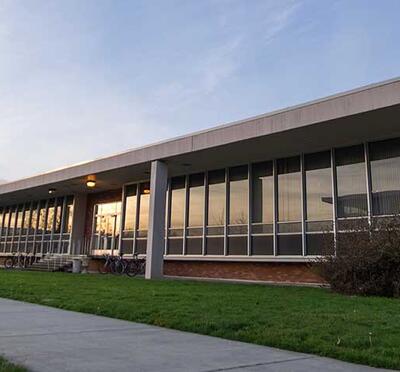Samuel Briggs joins the faculty in the College of Engineering's School of Nuclear Science and Engineering this fall as an assistant professor. A 2011 Bachelor of Science graduate of the school, Briggs returns with new expertise and national laboratory experience in the field of nuclear materials.
“I’m excited about the opportunity to assist in bringing nuclear materials capabilities and expertise to Oregon State,” Briggs said. “We’re hoping to someday make this a center of excellence, to complement Oregon State’s already impressive capabilities in our nuclear engineering and thermal hydraulics labs.”
Briggs’ background is in characterization of radiation damage in materials — determining how exposure to radiation affects materials at the atomic scale, then correlating those microstructural changes to changes in mechanical properties and performance.
While still a student at Oregon State, Briggs completed three summer internships — two at Pacific Northwest National Laboratories (PNNL) and one at NuScale Power, a small modular reactor company founded from research at Oregon State. At PNNL and NuScale he focused on reactor physics and plant design. But the possibility of exploring nuclear materials had already piqued his interest, even as an undergrad.
“A course I had taken here alluded to opportunities in materials science, and it left me wanting to learn more about the subject and how it fit in with nuclear reactor technologies,” Briggs said. “When I went to grad school, I really wanted to get my hands dirty doing experimental work.”
Briggs began his graduate work at the University of Wisconsin under Professor Todd Allen and Distinguished Research Professor Kumar Sridharan, using the accelerator on campus to irradiate materials and performing post-irradiation examination. He finished up at Oak Ridge National Laboratory in Tennessee, working with researchers Kevin Field and Phil Edmondson on accident-tolerant fuel claddings, as part of the Department of Energy’s Advanced Fuels Campaign.
After defending his dissertation in December 2016, Briggs went on to Sandia National Laboratories in New Mexico, where he worked with Khalid Hattar, a materials scientist, in the I3TEM (In-Situ Ion Irradiation Transmission Electron Microscopy) facility, using accelerators to guide heavy ions into various materials, and studying real-time radiation effects in different environments.
Briggs says his work is propelled by a desire to drive nuclear energy forward, enabling revolutionary, advanced reactor designs, rather than just iterating on the same designs that have been in use for the past 60 or 70 years.
These next-generation nuclear reactors will offer exciting new capabilities, like burning past reactor waste to reduce the volume of that material, or utilizing waste heat for secondary industrial processes such as splitting water molecules to produce hydrogen for fuel cells.
“A lot of these new systems are pushing the limits of what we have for materials right now. They employ some really challenging coolant environments such as molten salts or liquid sodium, which can be incredibly corrosive” he said.“They also operate at much higher temperatures and with more intense radiation, which can also affect the materials’ microstructures.”
Briggs wants to develop the capability here to look at corrosion effects in these systems by immersing candidate materials in these extreme environments, with the ability to control the chemistry and impurity levels in advanced fluid loops.
“That type of research is really needed by the Nuclear Regulatory Commission, and by some of the companies that are looking to develop these sorts of systems to the quality standards that the regulatory bodies require in order to license them,” Briggs said. “Much of the research I want to do here also has larger implications on energy management and storage. For example, molten salts have potential applications for use with solar energy concentrators to store thermal energy when the sun’s not shining.”
In the big picture, Briggs says, nuclear power has a big role to play in transitioning the world to a more sustainable energy future.
“Nuclear power is a carbon-free energy source,” Briggs said. “It’s getting harder and harder to deny the deleterious effects that the status quo for energy generation is having on the environment. Ultimately, we’re looking to assist in reforming that sort of energy grid model — to get away from burning fossil fuels and instead use a baseload of nuclear power supplemented by renewables and other carbon-free energy sources.”
Briggs’ appointment is supported by the Nuclear Regulatory Commission through a special program that provides funding for three years.



